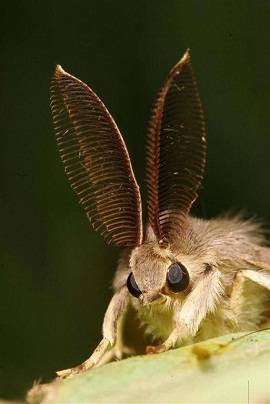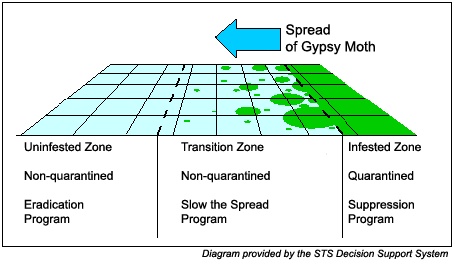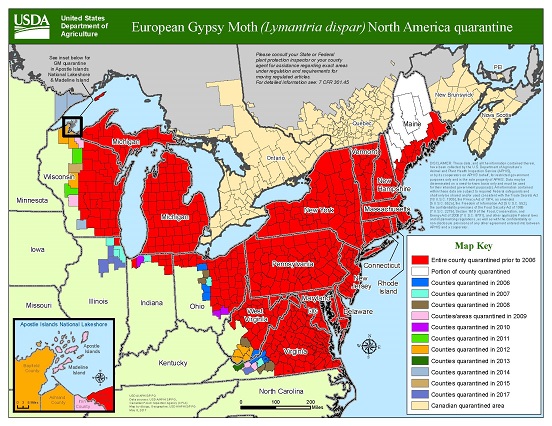How it got here
Gypsy Moth History

Gypsy moth is not native to the United States. The insect is originally from Europe and Asia and was first introduced in 1869 by a French scientist living in Massachusetts, who was attempting to breed the insect for silk production. Ironically the gypsy moth was never well suited to produce silk. The insect escaped and has slowly advanced westward ever since.






